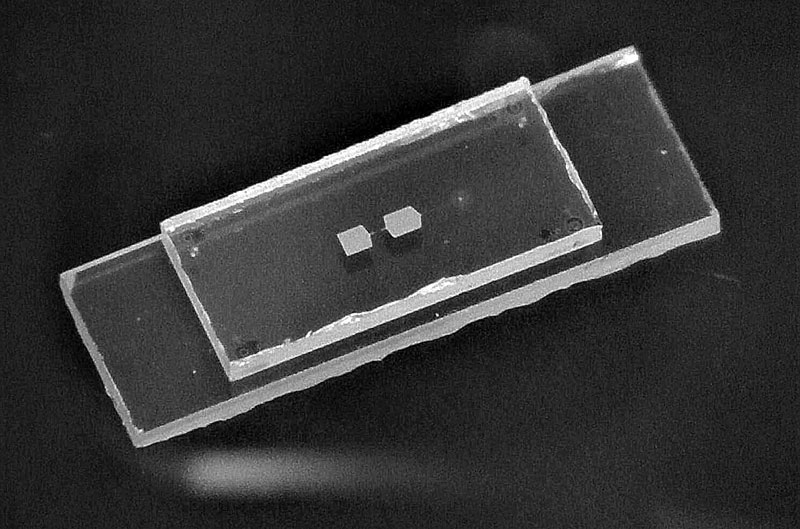Swiss scientists have given a qubit tangible physical features for the first time. Instead of ions, atoms and electromagnetic traps, they proposed a qubit based on a resonating piezoelectric membrane. Thus, scientists have significantly increased the coherence time of the qubit, during which it remains in a state of superposition longer. This opens up the possibility of carrying out quantum computing with it or using it as an ultra-sensitive sensor

The two gray rectangles on the left are a superconducting qubit, and the dot on the right is a resonator. Image source: ETH Zurich
Scientists have long learned to translate the quantum properties of elementary particles and atoms into qubit states for calculations or measurements. However, these methods suffer from high error rates and extremely short retention times of quantum states, making them difficult to manipulate freely. It would be tempting to reproduce quantum states at the macroscopic level by training the system to respond to changes at the microscopic level. This was achieved by researchers from the Swiss Federal Institute of Technology Zurich (ETH Zürich).
Scientists have combined a superconducting qubit and a piezoelectric resonator. The proposed solution made it possible to translate the state of superposition into resonant vibrations of the membrane. In fact, this is the first fully mechanical qubit, the researchers say. Through a series of experiments, they proved that the device was capable of responding to single photons. The coherence time of a mechanical (more precisely, acoustic) qubit significantly exceeds the coherence time of “bosonic” qubits and directly depends on the type of superconducting materials used.
At the next stage, scientists intend to test their proposed mechanical qubit as part of the computing circuits of a quantum computer, and also use it as a sensor for various measurements.